A few months ago, i interviewed Léopold Lambert about Weaponized Architecture, an architectural project and research that explores the power of architecture as a political weapon. The concept is illustrated by historical precedents, interviews and essays but it is also exemplified by a very precise situation: the impact of the Isreali occupation on the Palestinian built environment, in particular in the West Bank.
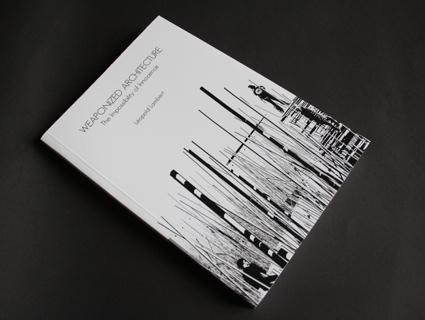
At the time of our conversation, Léopold was about to turn his research into a book. The publication is finally out (both in paperback and as an expanded mobile book) and its title is Weaponized Architecture: The Impossibility of Innocence.
It’s a lovely book and one that constantly surprises the reader by the depth of the research, the thought-provoking facts and ideas brought to light, by the photos, the maps and by the graphic novel that closes the book.
I’m not going to review it. Instead, i’ll take the fact that it recently landed inside my -always grateful- letterbox as an excuse to talk to Ethel Baraona Pohl and César Reyes Nájera who are both architects, bloggers and heads of dpr-Barcelona, the publishing house for Weaponized Architecture.
dpr-barcelona specializes in architecture and design books. Each of their publication is the result of a creative exchange between publisher, author or designer and the collaboration of academic experts that make most complete the overview about each project. Showing a clear innovative way to bring the contents to the public, our projects transcend the boundaries between time and space from conventional publications, approaching to those which are probably the titles of architecture in the future.
What i most admire in dpr-barcelona is that the publishing house is never afraid to question architecture, expand debates nor take risks with the way their books are presented and enjoyed.
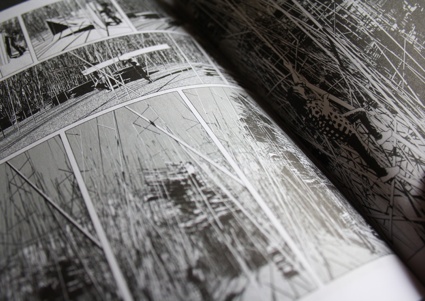
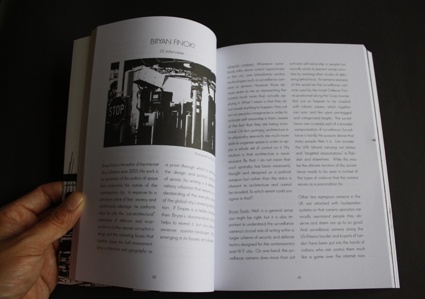
I’m copy pasting below some extracts from my online conversation with Ethel and César, it took place just before the book was out, hence the use of the future tense:
What i most admire about dpr-Barcelona is that you don’t seem to avoid politically challenging subjects. For example, when you chose to publish Situation Room, Weaponized Architecture, Un Atlas de Cartografías Radicales (the Spanish edition of An Atlas of Radical Cartography.) How do you select the books you are publishing and in some cases even translating? Do you pick up just what interest you as architects at a particular moment or do look for ‘gaps’ in the market?
We prefer to refer to them as gaps in the thinking. As architects we have been mostly educated through images more than ideas. Our task attempts to revert this situation by the contents we share and by the way we spread them. Coincidentally most of key issues we’re facing now as civilization deals with political and economical challenging subjects. Under this scenario architects, liberated from their aesthetics constrains, could genuinely learn and collaborate with socially useful projects and ideas. We build our editorial task in that direction.
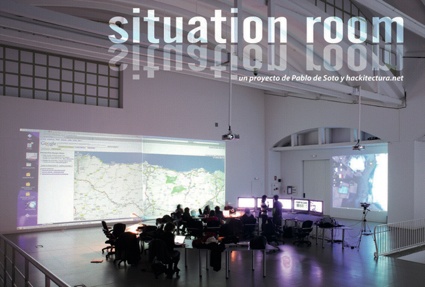 Situation Room, by Pablo de Soto and hackitectura
Situation Room, by Pablo de Soto and hackitectura
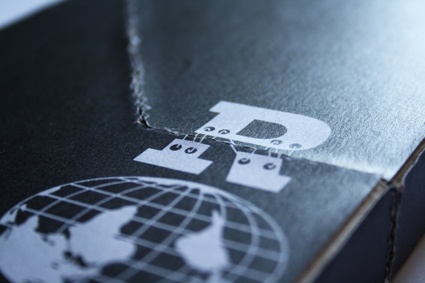 Un Atlas de Cartografías Radicales by Lize Mogel & Alexis Bhagat
Un Atlas de Cartografías Radicales by Lize Mogel & Alexis Bhagat
Why did you chose to publish Léopold Lambert’s thesis for example? How did you come across his research?
Our relation started as most of the connections done in the “network”: We noticed and follow Leopold’s work since he was editing the blog Boiteaoutils. We found quite interesting mostly all of the issues he deals at the blog and finally we got in touch in 2009 to publish his project Kili No Nara in our blog. From there our connection was going beyond the blogroll, so when we published Lost in the Line, we realized that it was part of a bigger project: Weaponized Architecture.
While exploring the research done by Léopold, we realized that it was a job worth spreading to a different level. Placing its research and proposal in the West Bank, Lambert expands politically the field of architecture narratives, integrating design as a weapon within the scene of the Palestinian struggle. Here we see an act of architectural disobedience, a way to resist an establishment using architecture as a weapon with all its political implications.
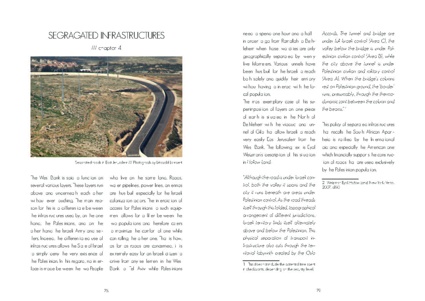
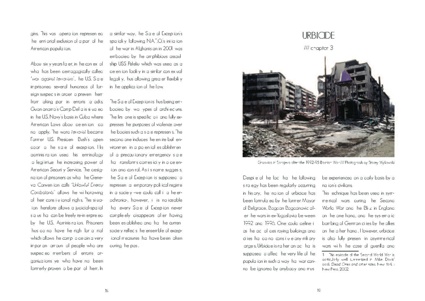 How did you turn a thesis into a book? Does this involve a lot of editing, reformulating, reformating? Or did you manage to stick as closely as possible to the original text?
How did you turn a thesis into a book? Does this involve a lot of editing, reformulating, reformating? Or did you manage to stick as closely as possible to the original text?
Even its origin is a thesis, when you go into the research and the structure proposed by Léopold, then you realize that naming it “a thesis” is just a formalism. Lambert shows in this work a clear intention of going further and works on the subject as an author committed to the subject studied. That is a sort of implication that goes beyond the limits of Academia.
So, our intervention as publishers has been minimum given that both the contents and the complete layout has been done by the author. We have done minor format adaptation for printing purposes and our main task was focused in supplementing with a publishing strategy aimed to expand the message as wider as possible by means of mobile-book version and the addition of Augmented Reality experience to some contents of the printed version facilitating multi-platform interaction to make more powerful [if possible] Léopold’s commitment.
The book will have a free expanded-mobile version, which means that almost all the contents, but adapted to the logic of mobile devices (enhancing immediacy, brevity, and simplicity) will be published for free under a CC license expanding the content of the physical book. The interaction with Augmented Reality will be part of this mobile-book.
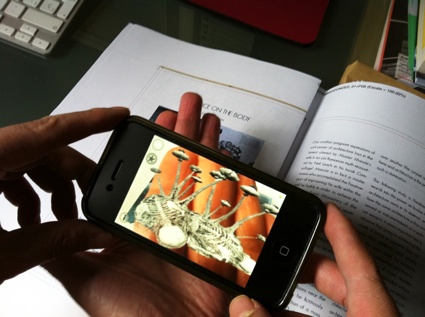
The book includes interviews with blogger Bryan Finoki and with Palestinian lawyer, novelist and political activist Raja Shehadeh and will be published both in paperback and as an expanded mobile book, with Augmented Reality [AR] interaction, so the content itself will be expanded through mobile devices.
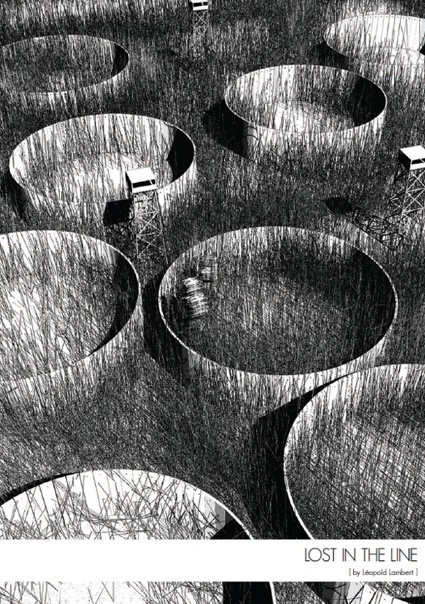 Léopold Lambert’s “Lost in the Line” visual essay, part of the book WEAPONIZED ARCHITECTURE: The Impossibility of Innocence
Léopold Lambert’s “Lost in the Line” visual essay, part of the book WEAPONIZED ARCHITECTURE: The Impossibility of Innocence
Related entries: Book review: Atlas of the Conflict. Israel-Palestine, Open City: Designing Coexistence – Part 2, Refuge, Decolonizing Architecture – Scenarios for the transformation of Israeli settlements and Welcome to Hebron.
